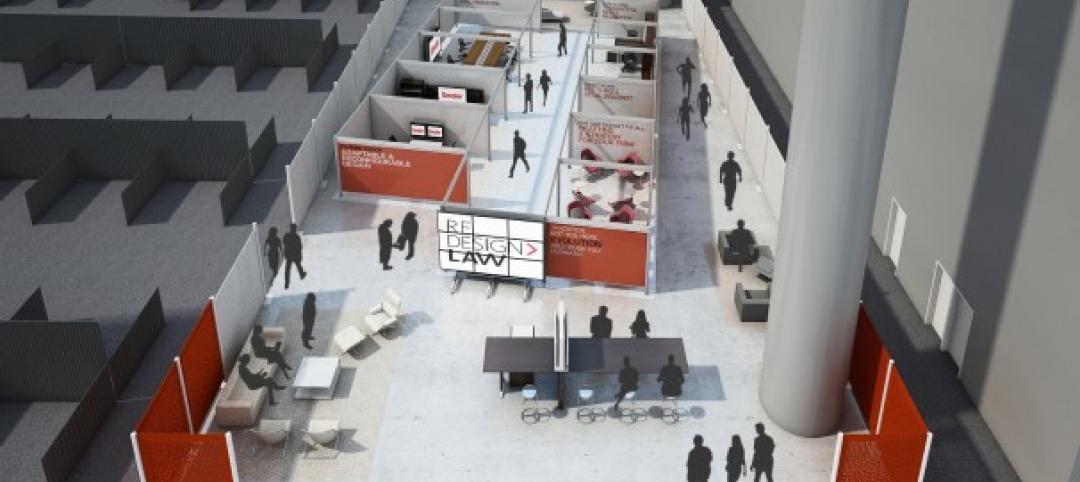The average amount of space per office worker globally has dropped to 150 square feet or less, from 225 square feet in 2010, according to a recent global survey conducted by CoreNet Global, a leading association of corporate real estate managers at large companies throughout the world. The study is part of CoreNet Global's ongoing advocacy of quality working environments and work experiences, and the group's call to action to measure quality of life per square foot.
At the same time, companies in the survey indicated that employment levels will increase in the second half of 2013—triggering a "property paradox," in which more workers are using less individual space.
The survey underscores how today's increasing mix of workers in the office and teleworking, assigned to team and individual projects, along with the rapid emergence of space-on-demand, co-working and other 'third places,' is combining to enable the balance of less space per office worker while more jobs are added.
Because of these fast-changing trends, CoreNet Global continues to advocate that companies create and implement workplace strategies that are integrated with the goals and business plans of the enterprise and that address the needs of employees and the type of work that is being performed.
Nearly two-thirds of companies responding to the survey report the average space per person is currently 150 square feet or less. Slightly over half of the respondents project an average of 100 square feet or less per worker as the norm in five years.
A leading factor is the monumental shift among corporate offices toward open space floor plans with fewer assigned cubes and assigned individual offices. In the survey, more than 80 percent of the respondents said their company has moved in this direction.
However, that trend too, may be reaching an endpoint. In the survey, 43 percent of the respondents say that they now have more collaborative space, than heads-down, private space where employees can focus. And that might be a problem: one-half of the respondents either agreed or said they were not sure if companies in general are over-building collaborative space at the expense of focus work and privacy (31 percent agreed; 19 percent not sure).
Also in the survey, nearly 60 percent projected increases in employment at their companies during the second half of 2013, only 11 percent projected a decrease.
"Through this survey, and anecdotally, we are hearing of a 'collaborative space bubble,'" said Richard Kadzis, Vice President, Strategic Communications for CoreNet Global. "Just as we have escaped the 'cube farms of Dilbertville,' some employees may start to feel that the open-space pendulum has swung too far, at the expense of a worker's ability to concentrate without interruption or distraction."
Multiple variables come into play, including the corporate brand, corporate culture, technological capabilities of the company, nature of the work performed, and cost. "We advocate that corporate real estate and workplace executives approach workplace management as a holistic practice starting at the C-suite level," Kadzis added.
"Workplace strategy is no longer a singular function of real estate, but a product of taking into account the needs and demands of the business, and how real estate should work with human resources, information technology, finance and other support functions to support overall organizational planning," Kadzis said.
The survey reveals how more than two-thirds of companies have instituted integrated workplace strategies.
About CoreNet Global
With more than 7,900 members, CoreNet Global is the world's premier association for corporate real estate (CRE) and workplace professionals, service providers, and economic developers. For more information, visit www.corenetglobal.org.
Related Stories
| May 29, 2014
7 cost-effective ways to make U.S. infrastructure more resilient
Moving critical elements to higher ground and designing for longer lifespans are just some of the ways cities and governments can make infrastructure more resilient to natural disasters and climate change, writes Richard Cavallaro, President of Skanska USA Civil.
| May 27, 2014
America's oldest federal public housing development gets a facelift
First opened in 1940, South Boston's Old Colony housing project had become a symbol of poor housing conditions. Now the revamped neighborhood serves as a national model for sustainable, affordable multifamily design.
| May 23, 2014
Top interior design trends: Gensler, HOK, FXFOWLE, Mancini Duffy weigh in
Tech-friendly furniture, “live walls,” sit-stand desks, and circadian lighting are among the emerging trends identified by leading interior designers.
| May 22, 2014
7 ways it pays to use BIM for data centers
Here’s where AEC firms and owners are getting the most bang for the buck when using BIM/VDC to coordinate data center projects.
| May 22, 2014
Big Data meets data centers – What the coming DCIM boom means to owners and Building Teams
The demand for sophisticated facility monitoring solutions has spurred a new market segment—data center infrastructure management (DCIM)—that is likely to impact the way data center projects are planned, designed, built, and operated.
| May 20, 2014
Kinetic Architecture: New book explores innovations in active façades
The book, co-authored by Arup's Russell Fortmeyer, illustrates the various ways architects, consultants, and engineers approach energy and comfort by manipulating air, water, and light through the layers of passive and active building envelope systems.
| May 20, 2014
Gensler envisions 'law firm of the future' with pop-up office project
Called "The Legal Office of the Future," the pop-up demonstration project made its debut this week at the annual conference for the Association of Legal Administrators in Toronto.
| May 19, 2014
What can architects learn from nature’s 3.8 billion years of experience?
In a new report, HOK and Biomimicry 3.8 partnered to study how lessons from the temperate broadleaf forest biome, which houses many of the world’s largest population centers, can inform the design of the built environment.
| May 13, 2014
19 industry groups team to promote resilient planning and building materials
The industry associations, with more than 700,000 members generating almost $1 trillion in GDP, have issued a joint statement on resilience, pushing design and building solutions for disaster mitigation.
| May 11, 2014
Final call for entries: 2014 Giants 300 survey
BD+C's 2014 Giants 300 survey forms are due Wednesday, May 21. Survey results will be published in our July 2014 issue. The annual Giants 300 Report ranks the top AEC firms in commercial construction, by revenue.
















